Oh, how Mrs. Wilder loved to grow things! More than one of her articles in the Missouri Ruralist mentioned gardening, but I particularly resonate with her wintertime dreaming of her next garden:
Now is the time to make your garden! Anyone can be a successful gardener at this time of year, and I know of no pleasanter occupation these cold, snowy days than to sit warm and snug by the fire, making garden with a pencil—in a seed catalog...It is so much easier to plan than it is to accomplish...We can work our dreams out into realities if we try, but we must be willing to make the effort.
—Laura Ingalls Wilder, “Make Your Garden!” The Missouri Ruralist, February 1918
Nobody is going to accuse me of having a green thumb, despite my lush imagination. My vegetable garden seeds are going into the ground mighty late this year, and I haven’t even gotten annuals yet, let alone planted them. I just planted cherry tomatoes and cucumbers this week, and my zucchini seeds went into the ground only a week or two ago, after I let the sprouts I had started inside wither and die.
For years, I didn’t garden because the lure of storm chasing pulled me away from home at the very critical spring season of planting and establishing a garden. I joined a host of others who planted a pandemic garden in 2020, since I knew we would be home, and I have planted a small garden every year since. Being a baseball mom pulls me away from home just about as much as storm chasing did, making even routine household chores like dishes and laundry something that I do in the cracks of other parts of our life. (In fact, I am writing this in the car on the way to a baseball tournament!)
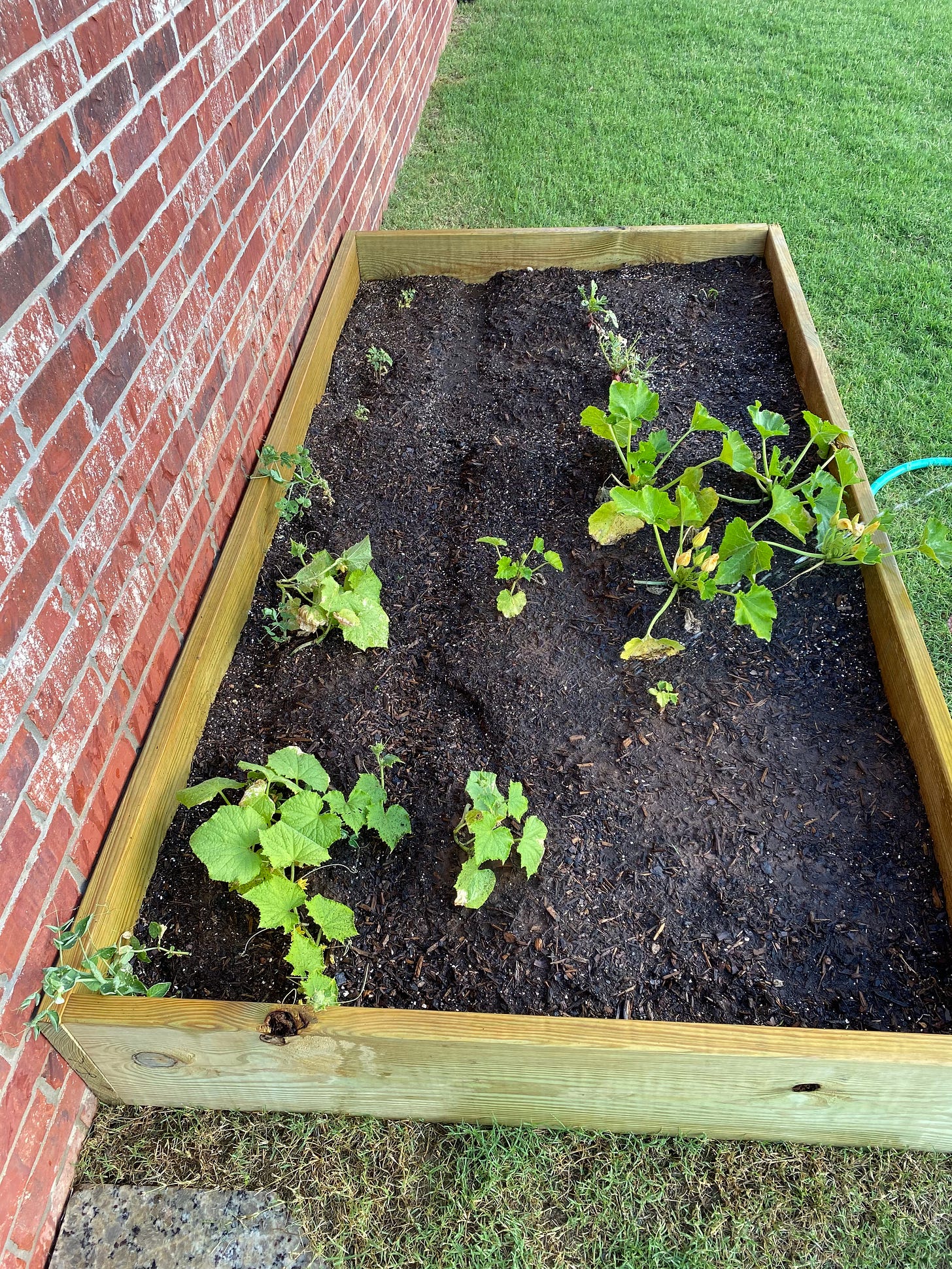
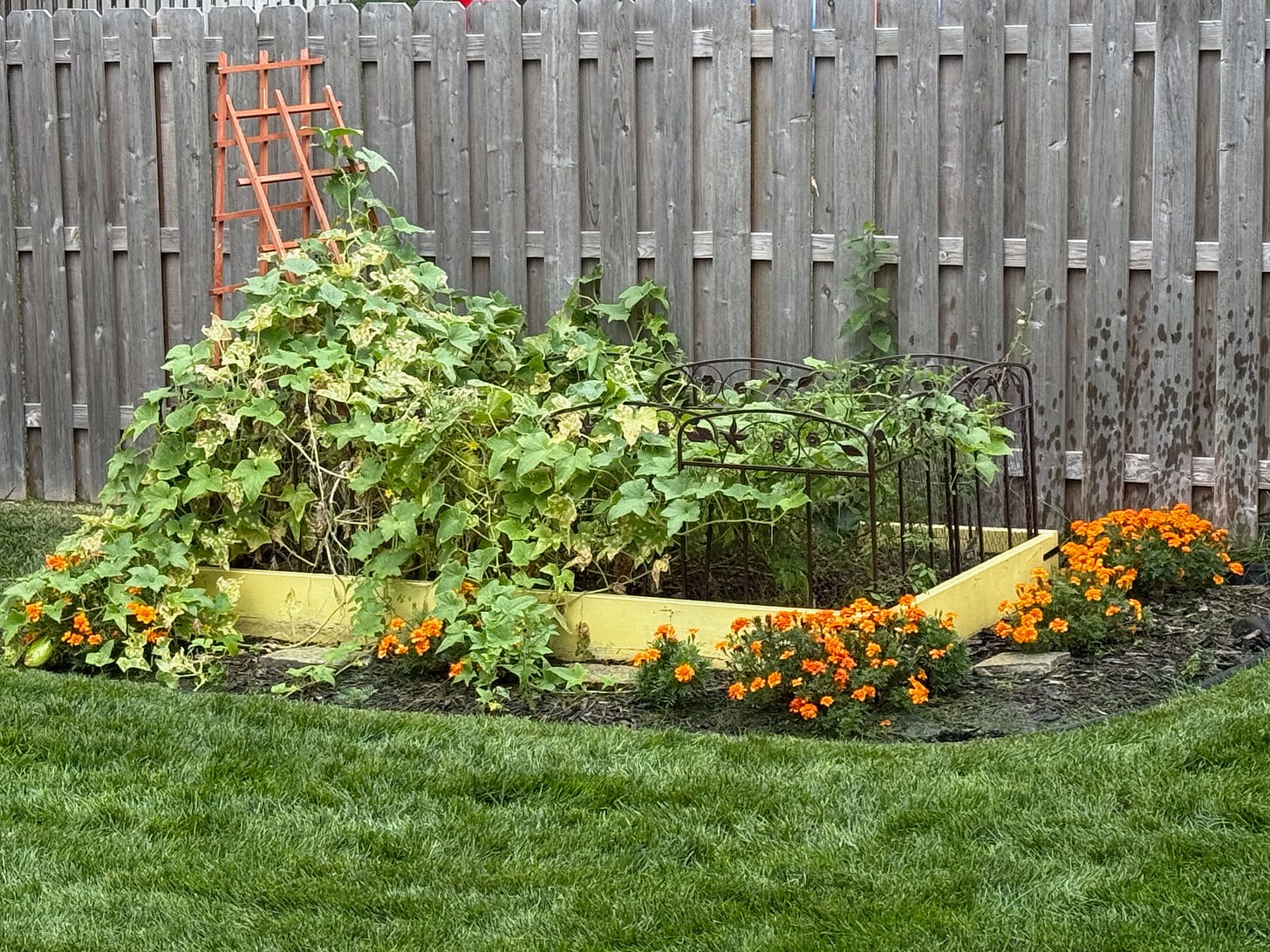
My garden has not always been easy or successful. The zucchini and cucumber vines in my pandemic garden in Oklahoma withered and died after producing one fruit each, and the tomatoes didn’t produce until right before the first freeze. Our garden in Omaha did a little better, but the zucchini vines still died after producing exactly two zucchinis. One year, I had an abundance of zucchini blossoms but no zucchini at all. Cherry tomatoes and cucumbers flourished, though.
Last year, baseball kept me from basic garden maintenance like weeding and trimming. The zucchini failed to thrive again, but my aggressive cucumbers overran the garden, winding their vines around the cherry tomato plants (one of which was a volunteer from the previous year) that themselves reached tentacles into the cucumber vines, entangling in a sprawling, ugly mess. Despite my neglect, cucumbers grew faster than we could eat or give away, and cherry tomatoes produced until a freeze put them out of their misery. One pathetic, overcrowded green pepper plant produced exactly four green peppers, two of which were already present when we bought the plant.
I grew up in Michigan, so getting the hang of Nebraska growing seasons took years of exposure for me. I participated in a shared garden at work and learned more about what would work in the Nebraska climate. When I moved to Oklahoma, I was all thrown off again. I under-watered the garden in the fierce Oklahoma sun and planted too late. I still struggle to know when to start seeds indoors in Nebraska, even though I have a good sense of when the typical last freeze occurs (late April), but I try to water the garden more than my gut tells me it needs, because my gut was trained on Michigan summer weather instead of Nebraska.
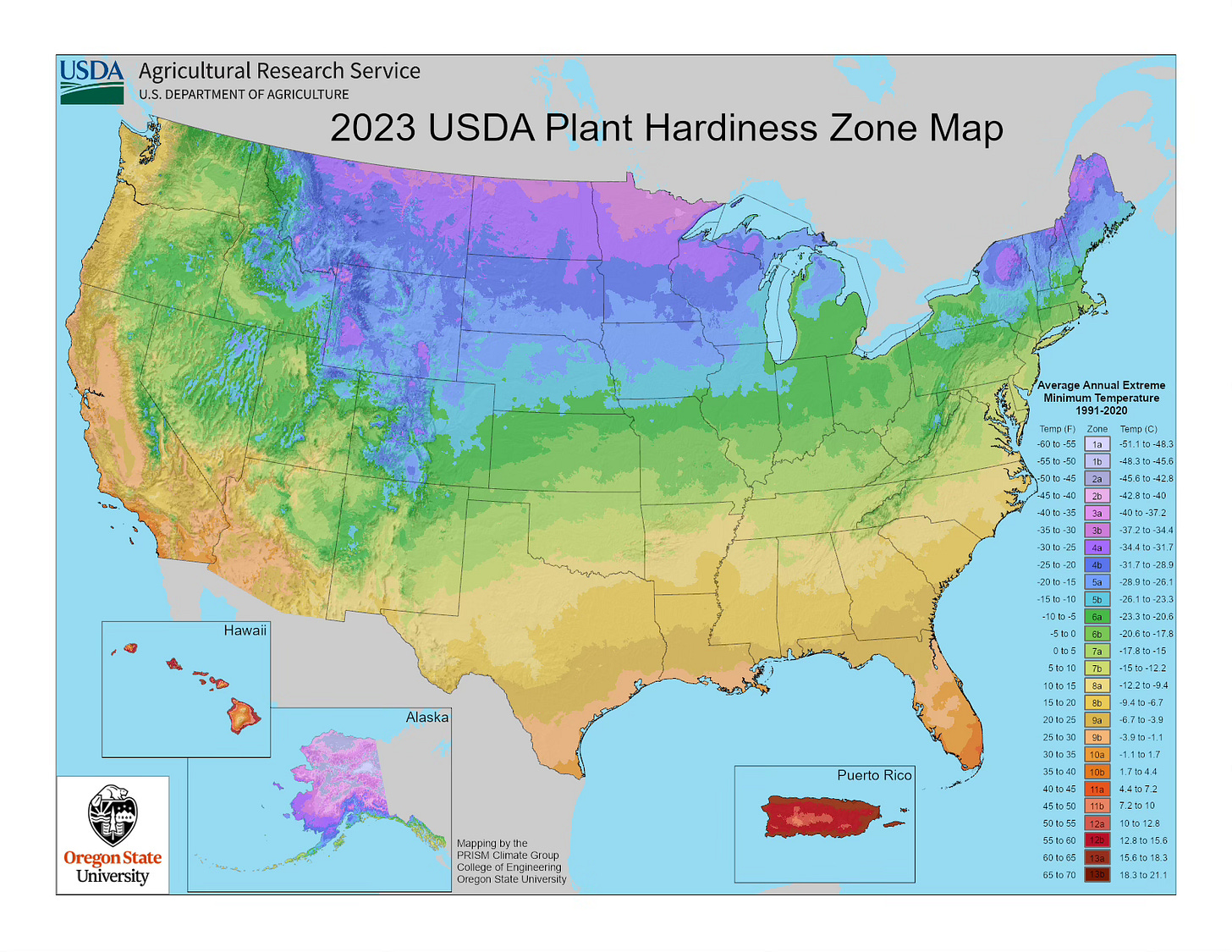
The USDA has published maps of plant hardiness zones across the United States since 1960, based on the coldest temperatures over a comparison period of decades, to help brown thumbs like me better understand what works where they live. The zones on the backs of seed packets were the same through most of my childhood, with an update in 1990.

It became clear in the 21st century that the zones needed more frequent updates. Warming temperatures meant that the zones no longer reflected growing conditions, especially on the edges of the zones. Just about everywhere across the US, the zones bumped up by about a half zone (for example, places on the southern edges of zone 6b moved into zone 7a). The USDA issued updates in 2012 and again in 2023. Some areas have moved up a full zone in the last 35 years, and planting zones will only continue to move in the future. This means that if you gardened as a kid at your parents’ or grandparents’ elbows, you learned lessons that no longer fit where you live. The children by your side will not grow the same things in their gardens in the same ways as you do now.
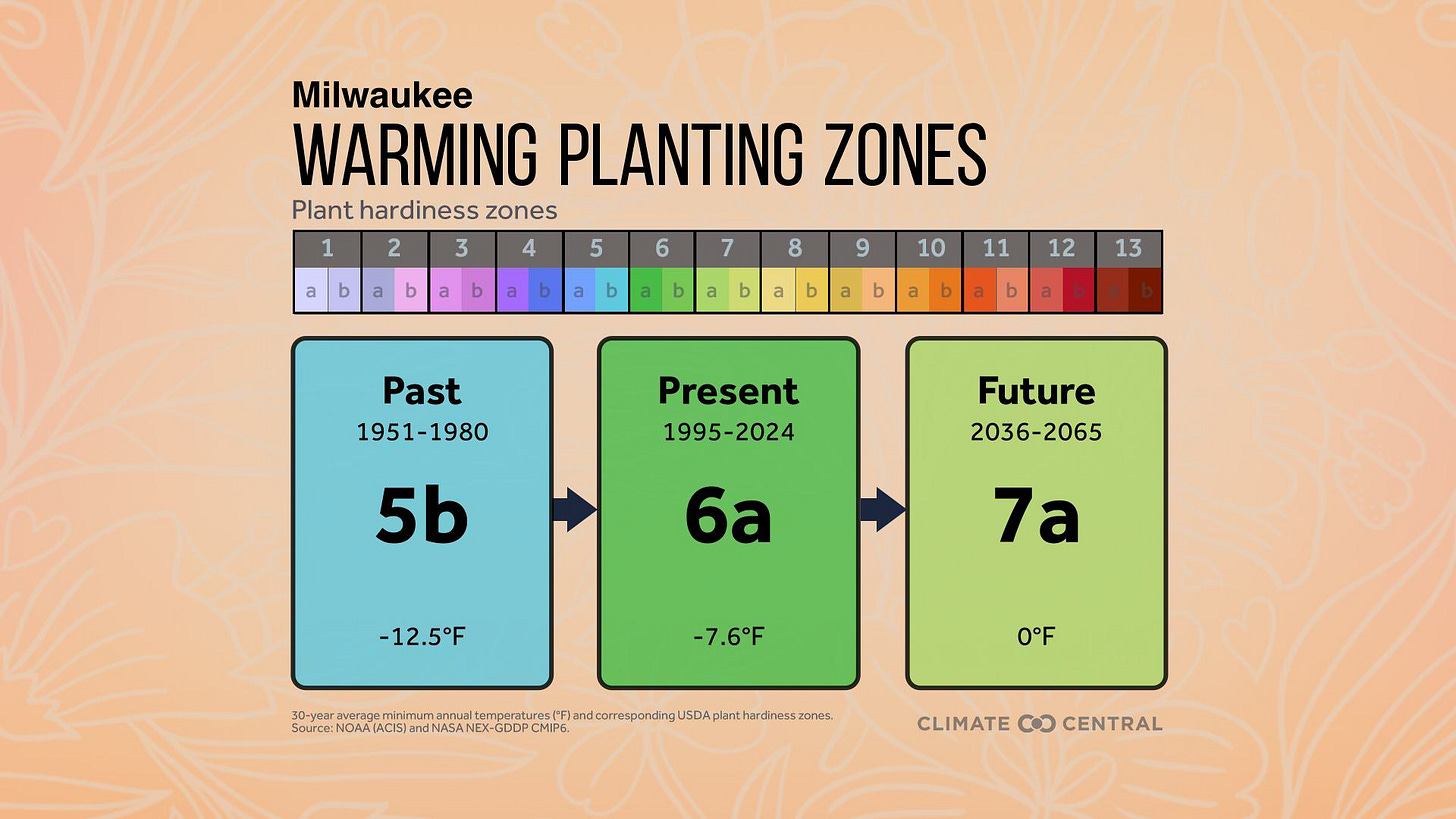
Of course, coldest temperatures are not the only factor that determines what grows in any given location. Hottest temperatures, growing degree days, first and last frost/freeze dates, chilling hours, rainfall totals and timing, sunlight (solar radiation), and soil type all matter, too. Sunlight and soil type don’t really change in any given location, while temperatures and rainfall patterns are changing just about everywhere. It isn’t quite so simple as saying that whatever grew in Kansas 50 years ago will grow in Nebraska now, even if the temperatures and precipitation are comparable, because the soils and solar radiation are not the same in both locations.
I’m going to keep trying to grow zucchini, stubbornly, while hoping the cucumbers and tomatoes continue to thrive - all with minimal maintenance, because that’s about all I can give. May you all have bountiful harvests! Let me know what you’re planting this year in the comments below.
Book Update
We are just two short days away from announcing preorder information for Wilder Weather! Stay tuned and check your inboxes sometime on Sunday evening (because, again, baseball tournament)!
This Month in Wilder Weather History
June 12, 1874: Speaking of gardens and green things, Rocky Mountain locusts reached southwest Minnesota, damaging crops, trees, and just about all things that grow wherever they landed. Lasting about four years, the locust infestations in the central United States caused widespread hardship and sparked conversations about government aid to farmers whose crops were ruined and families were hungry. The Rocky Mountain locust infestation of the 1870s was the last one before the locust became extinct.




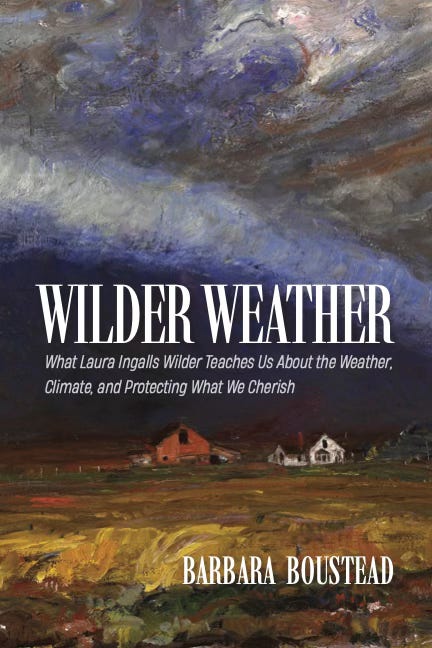
Because I grow mostly succulents on a patio, my garden does not attract many pollinators, Barb. It took a season of prolific zucchini blossoms followed by zero fruit for me to realize I needed to hand pollinate them. Now I facilitate zucchini sex early every morning using a Q-tip swab. I look for the taller "male flowers" with stamens loaded with pollen, swipe the stamen with a swab, and then swab the female flowers. The female flowers tend to be lower to the ground and have a stubbier stem (a zucchini in waiting, so to speak). I'm in southern California, so our growing season and climate are different, but I've gotten 7 zucchini from one plant (in a hydroponic grow box) so far this year. Zucchini bread anyone?